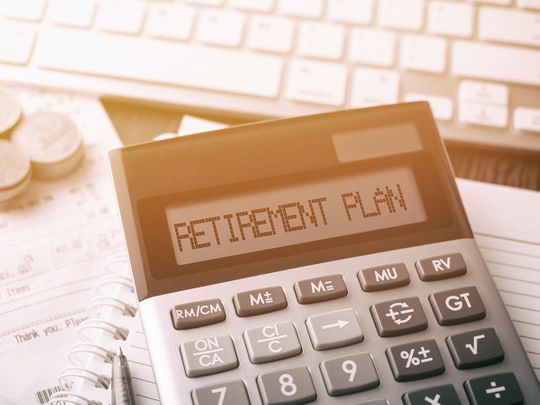
Dubai: When you think of how you plan on spending your savings during your retirement years, it’s most likely you would think of such future expenses as one that is either indeterminable or constantly varying in nature. But UAE financial planners have an opposing view.
“Spending your savings are all about three phases in retirement: the go-go years, the slow-go years and the no-go years. Expenses tend to be highest at the beginning and end of retirement — creating a U-shape,” explained Abu Dhabi-based financial planner Michael Cody.
So with retirement typically following a U-shaped spending curve, planners reiterate that it’s worth considering how your spending might change over the course of your retirement, particularly as multiple statistics point to many not planning for this.
Early retirement, the start of the U and is sometimes called the active phase; mid-retirement, which represents the bottom of the U-shaped curve when there is often a dip in both activity levels and spending; late retirement, when the curve starts to rise again on higher expenses.
How planning shapes up retirement spending
“As you enter retirement, especially early in retirement, you often find yourself using up your retirement pot and then later struggle to cut back,” Cody added. “For instance, the trips you plan for are often one-time events, and as you get older, you may naturally travel and spend less.
“Additionally, there’s also an uptick in medical expenses post-retirement. With the U-shaped retirement spending curve, it kind of looks like a smile when you look at all the numbers. But there’s a way to lean into this spending pattern and make the most of it to plan your retirement better.”
A U-shaped retirement plan works for many people — but not all. “Some people want to vacation up to the last day of their lives, buy new houses or always give money away. They’re not good candidates for a U-shaped spending strategy,” said Dubai-based financial planner Jameson Burton.
Delay encashing your retirement funds, it helps
“The longer you wait to claim your retirement funds, the higher your payments will be when you do, giving you more income to work with. You’ll have to pull disproportionately from your retirement savings to start, but in later years, you’ll be able to pull more from your retirement pot.”
Burton further added that the second half of the ‘U’ is funded much more by retirement savings and less by your savings. “If you don’t have the ability to wait, you may be on a more linear retirement path, as opposed to the U curve,” he added.
“This is why I almost never recommend encashing your retirement savings in your early 60s, especially if there are a ton of healthcare issues or a lot of other expenses going on. Because if you do, you’re not on a smile spending strategy, but more of a survival strategy.”
Tip #1: Keep fixed expenses low
Cody says the ideal fix would be to simplify your balance sheet — pay off your mortgage, get rid of credit card debt. “The more you can pay down your debts pre-retirement, the more freedom you’ll have to adapt your retirement spending as needed.
“For example, if the stock market takes a dive, you can drop discretionary expenses, so you withdraw less from your savings that year. It’s figuring out where we can cut back in the event that things do go haywire.”
For retirees with larger fixed expenses or who are, let’s assume, supporting their children, it may not be possible to budget for trips in early retirement years. “Maybe we do not have those early expenses because we don’t have a lot of levers to pull in the event they need to cut back,” he added.
Tip #2: Make plans for long-term care costs
According to a global study by online research platform Statista, majority retiree savers spend more in late life on healthcare and long-term care, creating the back end of the U-shape. “Long-term care insurance (or a product like it) can make a big difference in retirement planning,” added Burton.
“Hybrid policies that combine permanent life insurance with a long-term care can help pay out a benefit no matter what happens, but they can be expensive. If you don’t have long-term care insurance, hold back Dh300,000 as that’s what people on average need for long-term care.”
Burton added that if you have equity in your home, you may be able to use that to cover end-of-life expenses. “In most situations, you can take that home equity and repurpose it for the extra expenses related to long-term care.”
Key takeaways?
• Understanding the U-shaped typical spending trajectory helps us see how financial needs change throughout retirement.
• A financial plan should take into account changing spending patterns to ensure that retirees have sufficient funds to cover their needs throughout their retirement journey.
• As everyone’s financial journey is different, and some do not need to take on many expenses, which may well change the shape of the curve. In this case, the amount required to live on in retirement tends to decline over time.
• The state of your health is one of several unknown variables that make it difficult to plan for retirement.

_resources1_16a4a1613d8_small.jpg)








